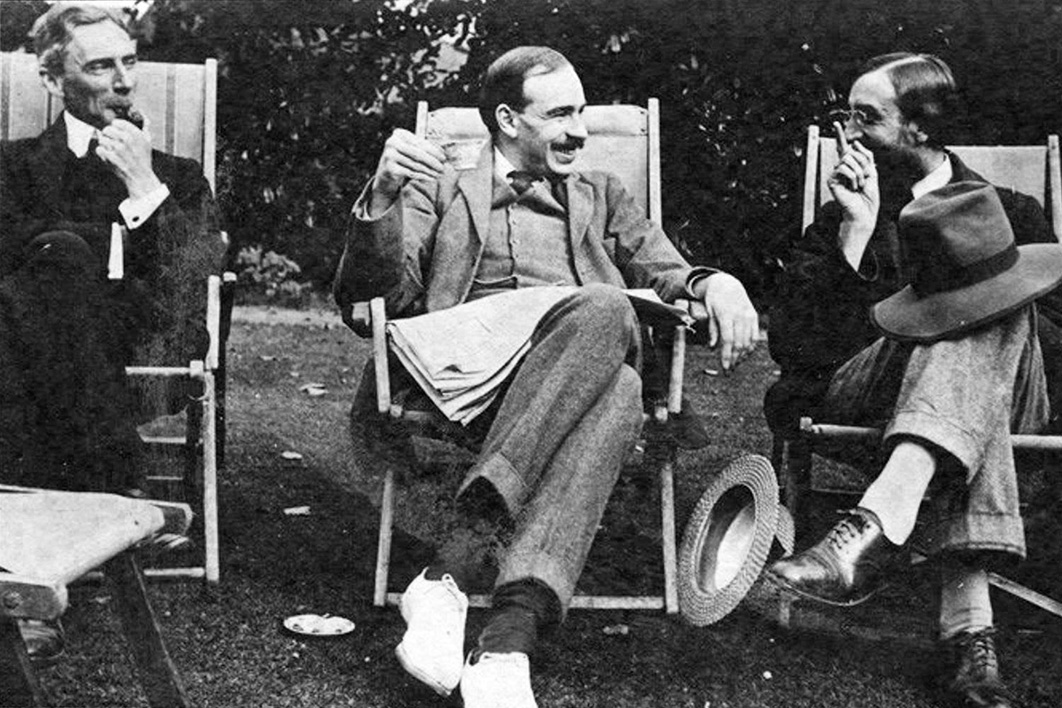You’re Paid What You’re Worth: And Other Myths of the Modern Economy
By Jake Rosenfeld | Harvard University Press | $49.95 | 384 pages
The Work of the Future: Building Better Jobs in an Age of Intelligent Machines
By David Autor, David Mindell and Elisabeth Reynolds | MIT Work of the Future Task Force | Free download | 92 pages
Time for Things: Labor, Leisure, and the Rise of Mass Consumption
By Stephen Rosenberg | Harvard University Press | US$49.95 | 368 pages
Liberty Ashes is a private waste collection company operating in New York City. Over a six-year period, one of the company’s garbage trucks severed the fingers of three employees. Two pinkies and one ring finger were lost because the truck lacked a safety latch.
Garbage collection is one of the most dangerous jobs in America. Each year, around one in 2000 workers in the industry lose their lives. Standard economic theory tells us that a risk of this magnitude should be accompanied by substantially higher pay. But the median hourly wage for American garbage collectors is only US$17.40, which hardly seems sufficient to make up for a death rate comparable to serving in a war zone, not to mention the daily risk of other injuries.
In You’re Paid What You’re Worth: And Other Myths of the Modern Economy, sociologist Jake Rosenfeld outlines many of the injustices that underpin the American economy. In Oklahoma City, Walmart workers took up a canned goods collection to support people who couldn’t afford food. The beneficiaries? Fellow Walmart employees who weren’t able to make ends meet on the company’s meagre salaries. Across the United States, home-care workers subsisted on an average hourly wage of $10 an hour. Many couldn’t find full-time work, so they worked multiple shifts at different aged care homes. This precarious arrangement not only made life tough for workers, it also helped to spread Covid-19 among aged Americans when the pandemic struck.
It’s not as though American workers aren’t keeping up their end of the bargain. Rosenfeld cites research showing that truckers are almost twice as productive today as they were in the 1970s. Yet in some cities, their wages have fallen by a third in real terms. Deregulation, declining union power and the pressure on owner-drivers has made a dangerous job even riskier, yet their real take-home pay buys much less than it once did.
Even in manufacturing, often touted as the sector that guarantees stable employment and respectable earnings, the number of good jobs has diminished. When Tesla opened a production facility in Fremont, first-level workers earned US$17 to US$21. Rosenfeld presents evidence that chief executive Elon Musk discouraged unions while touting the fact that employees could enjoy free frozen yoghurt and high-speed rollercoaster travel around the factory.
Across industries and occupations, the past generation has been tough on American workers without post-school qualifications. As MIT researchers David Autor, David Mindell and Elisabeth Reynolds report in The Work of the Future, the real earnings of men with less than a university degree are now 10 to 20 per cent lower than in 1980, while men with a university qualification have seen earnings gains of 25 to 50 per cent. Productivity has continued to grow, but the gains have flowed to shareholders and executives rather than regular employees. A gap between productivity and earnings gains has opened up in many advanced nations, but it is twice as large in the United States as in Australia.
Other worrying trends have emerged. For much of the postwar era, American cities have served as an escalator to social mobility. Traditionally, moving from a regional area to a major city boosts the earnings of all workers, high-educated and less-educated alike. But this no longer holds true for less-educated workers. High-wage professionals get a pay bump from working in a large metropolis; workers without a university degree do not.
While trade has been criticised for hollowing out the labour market, technology has had significantly more impact. Autor, Mindell and Reynolds show that around 60 per cent of Americans work in jobs that did not exist in 1940, including occupations such as chat room hosts, sommeliers and drama therapists. Yet technological change tends to be skill-biased, meaning that less-educated workers are most at risk. The change will not be as dramatic as some have predicted — there are still few robots in small firms — but workers in routine jobs remain vulnerable to automation.
How might the United States improve the quality of work? Rosenfeld argues that no job is inherently bad, and cogently discusses how the quality of work can be lifted. Following the publication of The Jungle, Upton Sinclair’s 1906 novel about meatpackers, the sector became safer, more sanitary and better paid. Indeed, in the 1950s and 1960s meatpackers earned more than the average manufacturing worker. Similarly, unionised garbage collectors receive fair compensation and decent conditions. Bad jobs can be made good.
Rosenfeld also offers a series of sensible reforms that would help tweak the balance in favour of employees. Because pay secrecy tends to advantage the stronger party, its abolition would especially help women. Reining in the temporary help industry would provide more stability of employment. Aligning occupational licences with consumer safety would make over-protected industries less of a closed shop. Banning non-compete clauses would facilitate worker mobility and encourage innovation. Preventing firms from accruing too much market dominance would ensure that workers have more than one employment option in their local area.
At a deeper level, Milton Friedman’s theory of the primacy of shareholder value is coming under increasing challenge. During the 1990s, Coca-Cola chief executive Roberto Goizueta had a computer installed in a room adjacent to his office so he could track the company’s share price. Market analysts rebelled when firms paid their workers a living wage. Boards paid executives in share options, providing a lucrative incentive to focus on shareholders, and leading to a situation in which the chief executive of Starbucks earns as much in two hours as one of his baristas makes in a year.
No law of nature says companies must be run only for the benefit of the shareholders. In 2019 the US Business Roundtable, comprising 181 chief executives, issued a “Statement on the Purpose of a Corporation.” They pledged to lead their companies for the benefit of all stakeholders: customers, suppliers, communities, shareholders — and yes, employees.
The MIT report also emphasises the need to improve the quality of training. While online education has been patchy, Autor, Mindell and Reynolds point out that the pandemic has rapidly increased the investment of firms and educational institutions in improving it. They describe how IBM uses artificial intelligence to suggest to its employees which training modules they should undertake, and expects every worker to complete at least forty hours of training a year (the median IBM employee does fifty-two hours). They describe how “intermediary programs” can work effectively by building close relationships with employers and making sure educational providers are responding to what firms need.
Interestingly for an Australian audience, the MIT report is also critical of how US tax law shapes firms’ decision-making. “A series of tax law changes enacted over the last four decades has increasingly skewed the US tax code toward subsidising machinery purchases rather than investing in labor,” they write. “Tax policy offers firms an incentive to automate tasks that, absent the distortions of the tax code, they would accomplish with workers.” Far from advocating an expansion of accelerated depreciation tax breaks — as the Morrison government did in its 2020 budget — the MIT economists call for the complete elimination of accelerated depreciation, so as not to favour investment in machines over investment in workers.
Together, You’re Paid What You’re Worth and The Work of the Future offer the kinds of proposals that are likely to animate the thinking of the Biden administration: tilting the balance back towards organised labour, reimagining on-the-job training, encouraging corporations to serve the whole community, not just their shareholders. Right now, low-skilled Americans are paid an average of US$10 an hour, well below the US$17 earned by the average low-skilled Australian worker. Although it’s hard to know for sure what impact each measure might have, the net result of a package of progressive labour reforms would surely be to increase the family incomes of millions of working-class families.
But perhaps a single-minded focus on earnings ignores the crocodile in the corner. In Time for Things: Labor, Leisure, and the Rise of Mass Consumption, social theorist Stephen Rosenberg argues that the central omission from this kind of analysis is time. Why should the gains from higher productivity keep going into pay, at best, rather than leisure? Shouldn’t employment be a means to an end rather than an end in itself?
The nub of Rosenberg’s argument is encapsulated in two predictions made by economist John Maynard Keynes in the 1930s. Productivity growth, he predicted, would enable an eight-fold increase in real incomes over the coming century. And much of that would translate into shorter working hours, so the typical person might work around three hours a day, or fifteen hours a week.
Both Keynes’s forecasts turned out to be wrong, but in opposite directions. On economic growth, the indications are that he understated the gains, with incomes rising not by a factor of eight but by perhaps as much as a factor of seventeen. On working hours, he overstated the gains. Full-time employees are working about forty hours a week, much the same as full-time workers in 1940.
On the face of it, Keynes’s predictions were utterly reasonable. His growth projections assumed that the rate of growth he had witnessed since the late 1800s would continue. Thanks to innovation, education and urbanisation, though, economies grew even more rapidly than expected.
In terms of working hours, Keynes was also extrapolating from what he had seen. Average hours for full-time American workers fell from about sixty hours a week in 1900 to fifty hours a week in 1920. By 1940, the average was down to forty. American workers had gone from working six days a week, ten hours a day to five days a week, eight hours a day.
This didn’t happen because of the beneficence of company owners. It was a result of the campaigning of the union movement. In 1866, the General Congress of Labor met in Baltimore and resolved that “the first and great necessity of the present is to free the labor of this country from capitalist slavery in the passing of a law by which eight hours shall be the normal working day in the states of the American union.” Six years later, more than 100,000 New Yorkers went on strike to campaign for an eight-hour working day. By the end of the 1800s, it was said that almost all economists and social reformers favoured a reduction in working hours.
Such a movement certainly accords with economic theory. In first-year economics classes, we show students models in which leisure brings “utility” (also known as wellbeing or happiness), while work brings “disutility.” Raise someone’s wage, and you might reasonably expect them to work a little less. As Mark Twain once quipped, “If work were so pleasant, the rich would keep it for themselves.”
In this case, however, the joke was on Twain. A century after his death, high-wage workers were not pursuing leisure — they were chasing work. Plenty of people buy copies of Tim Ferriss’s book The 4-Hour Workweek, but few take its advice. Industrial campaigns shifted, too: since the end of the second world war, the focus of unions has been on higher pay rather than shorter working weeks or longer holidays.
Why was Keynes wrong? Rosenberg points out that it wasn’t as though a reduction in hours was impossible. Suppose that just a quarter of the productivity gains in the postwar period had been put into shorter hours rather than fatter profits and pay packets. The work week would be about half what it is today. Yet it didn’t happen. As Rosenberg observes, “the effort to limit hours at work, somewhat mysteriously, almost vanished in the second half of the century.”
Various theories might explain why. Perhaps what matters isn’t getting ahead, but getting ahead of the Joneses. If what counts is your earnings relative to other people, then it might be impossible to get off the treadmill. For example, the price of land is largely determined by the demand of others, so if you’re in a society where everyone else works forty hours a week and spends a quarter of their money on housing, then dropping back to fifteen hours a week might mean living in a shoebox.
Another possibility — not one raised by Rosenberg — is that work is addictive. Economist Daniel Hamermesh points out that when people work long hours, their friends become office friends, their jobs come to define their identities, and their leisure activities dwindle. In many occupations, the top jobs are only available to those who are willing to put in extremely long hours. It’s impossible to become an Olympic athlete, High Court justice or university vice-chancellor without sacrificing nights and weekends. Many more with the ambition to take on such roles will put in the hours yet not attain the goal.
Ultimately, however, Rosenberg settles on an intriguing explanation: that the reason workers stopped pushing to reduce working time is that products got better, and consumers began to demand more of them. The car, he argues, was the ultimate consumer commodity. In the 1920s, repayments on a car loan might have cost a quarter of an average person’s wage, but workers were obsessed by them. Within a generation, Rosenberg writes, American towns moved from a horse culture to a horsepower culture. He quotes one union organiser who claims that workers’ infatuation with cars made people less likely to join unions. The individual lure of the automobile, and the status it represented, provided a new benefit for working hard. “The automobile was thus well suited to serve as compensation for work, a counterbalance to the loss of freedom represented by having to sell labor for a wage.”
And so it went for other goods. Rosenberg devotes chapter after chapter to intriguing explanations of the many ways in which consumer products became tangibly better during the twentieth century. As brands emerged, companies had a reputational incentive to ensure that their products performed as well as they claimed. Companies began to offer warranties rather than simply selling them with a “buyer beware” warning. Governments stepped in to ensure that potentially harmful items were tested before they reached the market. Products were rated so that buyers could make an informed choice.
The “inexorable expansion of the industrial economy,” writes Rosenberg, was not merely due to business owners chasing profits but also to “ever-increasing consumer demand.” People stopped campaigning for shorter hours because they wanted to buy more stuff. And why did they want to buy more stuff? Because the stuff on offer was better than ever.
The move away from working-hours campaigns affected not just business, but unions too. Rosenberg observes “a stark contrast between the long tradition, stretching from the 1830s to the 1930s, of American labor fighting for a shorter working week and the postwar era of collective bargaining and productivity-based wage increases.” In the first era, workers wanted more leisure time; in the second era, they wanted more money. Radical reformers had once seen a fundamental unfairness in exchanging labour for money. Consumerism undercut this moral critique of the economic system.
Could this change today? In the realm of consumer products, the online economy may turn out to be easier on the hip pocket. The cost of an android-powered smartphone and a generous data plan is falling fast, while the number of entertaining things that can be done with such a phone continues to grow. A similar trend can be seen with cars and clothing. Yet housing costs continue to grow faster than wages, making it difficult for many people ever to envisage downshifting.
As a result, housing costs matter even more than we might have thought. In Australia, housing affordability has worsened badly over the past generation, with the price of a typical home rising from twice average incomes in the 1980s to around seven times today. The home ownership rate is at a six-decade low, and the decline has been especially marked for people of modest means. Generous tax concessions to landlords mean that housing has moved from being a consumption good to an investment good. As a result, a few people have multiple homes, and many have no home at all. Perhaps it’s no coincidence that a country like Germany has cheaper homes than Australia and its workers enjoy six weeks of annual leave.
This isn’t just individually unfair. If overpriced homes are preventing people from enjoying more leisure, then that has a social cost too. If working longer hours to pay the mortgage reduces the time I have available to watch television, then that’s just an individual cost. But if the effect of longer working hours is that I give up coaching the school soccer team, then it affects others. It’s harder to build a strong community when people are toiling long and unpredictable hours to pay down gargantuan mortgages.
As Jake Rosenfeld and the MIT economists have documented, there is a lot to dislike in the way the American labour market has operated over the past generation. Getting middle-income workers a fair share of their productivity gains, improving workplace safety, and making bad jobs good should all be important goals for a civilised society. No one should have to risk losing a finger just to earn a living. Together, such sensible reforms would reduce inequality in the United States, which has grown to levels that match the Great Gatsby era.
Stephen Rosenberg’s work brings a much-needed social dimension to our understanding of work and shows that another campaign is waiting in the wings. If workers can get a fair share of their output, and housing can be made more affordable, it should be possible to provide employees with more leisure time. There is no reason why union campaigns for shorter working days and more generous holidays should be consigned to the dustbin of history.
No constitutional provision would prevent the United States from moving from two weeks’ annual leave to four weeks. Similarly, no iron rule says it is impossible for Australia to follow the European example of providing six weeks annual leave to the typical worker. Indeed, at a time when Australian community life has frayed, increased leisure time might provide a way to build a more reconnected Australia. Prioritising family and community time might mean that we become a nation more of “we” than of “me”: a nation where we don’t just live to work, but work to live. •




